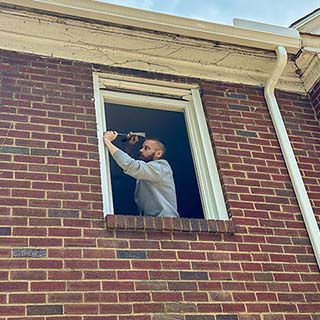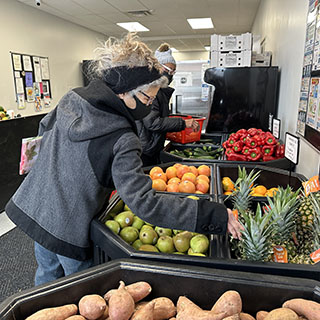More than $22 million in federal funds will be coming to Mahoning and Trumbull counties — as part of an agreement between the U.S. House and Senate — including $6.16 million for the Youngstown-Warren Regional Airport’s primary runway and $4.2 million for a waterline in Lordstown. The package, which had more than 6,500 earmarks totaling $12.7 billion, includes several big-ticket items for Mahoning and Trumbull counties. At the top of the list is $6.16 million for the airport in Vienna, through the Western Reserve Port Authority, which operates it, to resurface the airport’s main runway. That money would go with a $5 million federal earmark WRPA received for that work in 2022. Anthony Trevena, WRPA’s executive director, said he didn’t want to comment on the money until after the Senate vote. The Youngstown Air Reserve Station, which is adjacent to the airport, is receiving $2.5 million from this package for planning and design work for a new fire station. The station itself is estimated to cost $25 million.
The earmarks for the Mahoning Valley were sponsored by U.S. Sen. Sherrod Brown, D-Cleveland, along with U.S. Rep. Dave Joyce, R-Bainbridge, and Bill Johnson, a Republican who resigned from the U.S. House in January to become Youngstown State University president.
The village of Lordstown would get $4.2 million to make improvements to its water distribution system by replacing the Pritchard Ohltown Road water station and installing a redundant 24-inch waterline from Meander Reservoir. The line would provide water — as well as a backup in case the existing line goes down — primarily for the Ultium Cells battery plant and other parts of the village. The village, through Brown and Joyce, had sought $14 million for the project. “The funding we received is outstanding,” Lordstown Mayor Jackie Woodward said. “It’s a great start. It’s definitely going to help lift this project off the ground and hopefully we can see the project start soon. I’m very pleased with the funding. Of course, it falls short of the full amount, but at least we can get started.”
Christopher Peterson, president of the village’s board of public affairs, said, “We’re very happy we’re getting the $4.2 million. We’ll take what we can get. We really appreciate any of the funding agencies giving us money for this.” The village applied for a $3 million grant from the Ohio Department of Development and is seeking $6.1 million from the state’s capital budget, Peterson said. The projects at the airport, YARS and Lordstown were the three funded in Trumbull County at a total of $12.86 million.
MAHONING COUNTY
Eight projects in Mahoning County would receive a total of $9,807,652 from Congress. That includes $2.5 million each for Flying HIGH Inc., a Youngstown-based nonprofit, to help with infrastructure needed for housing development in the county, and for the Mahoning Valley Community School in Youngstown for a community learning center on the city’s South Side. The school received a $1 million state grant in January.
The school purchased the former Job and Family Services building at 2026 South Ave. to turn it into a community learning center with plans to include a gymnasium, cafeteria, additional workforce development classrooms, a wellness center, a media center and a childcare facility.
Youngstown received $1,284,652 for an interceptor sewer replacement and combined sewer overflow elimination project, $1.2 million to replace waterlines with lead in them and $400,000 for a transportation study for the East Side with a focus on looking at ways to connect it to an Interstate 80 interchange at state Route 304.
Also, the Youngstown Neighborhood Development Corp. would get $1,020,000 for its ongoing effort to renovate the former Foster Theater on the city’s South Side into housing and businesses.
To read the full story from The Vindicator, click here.





